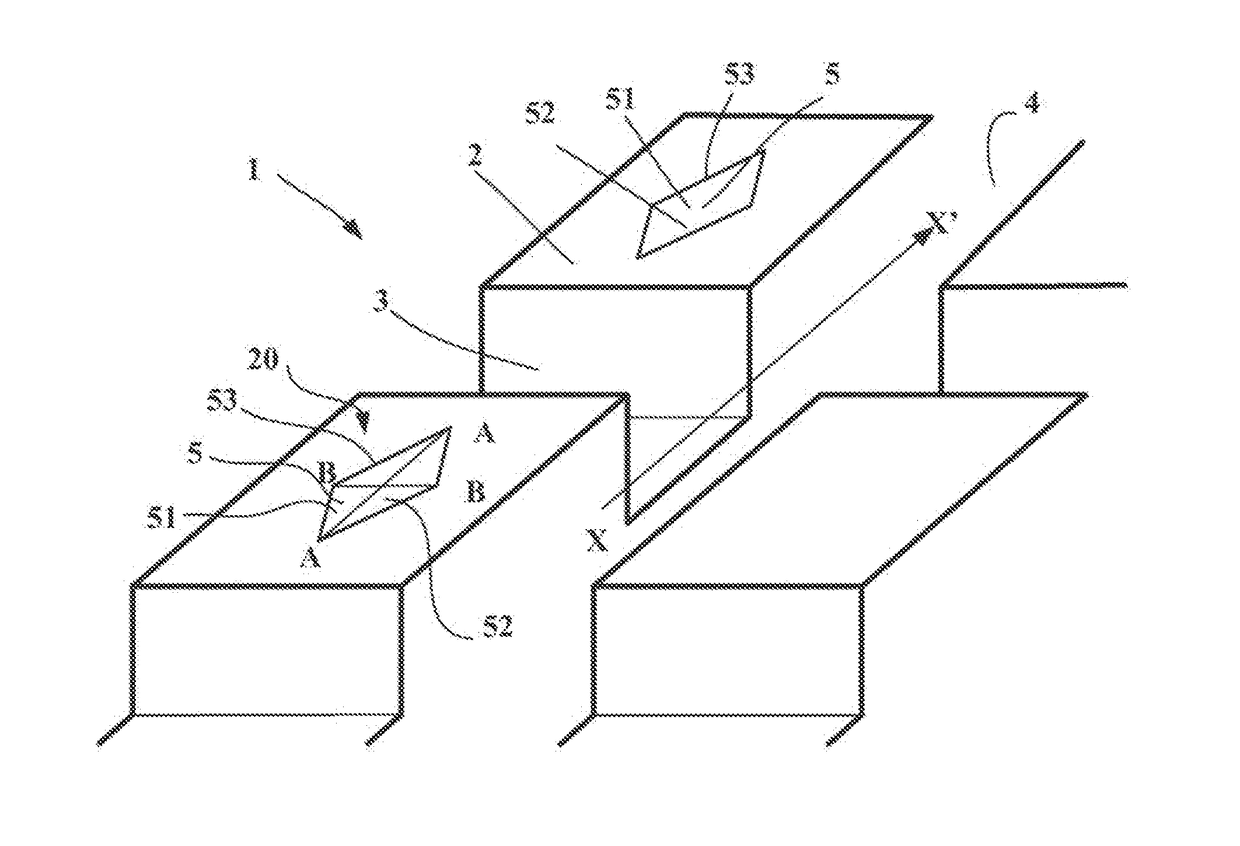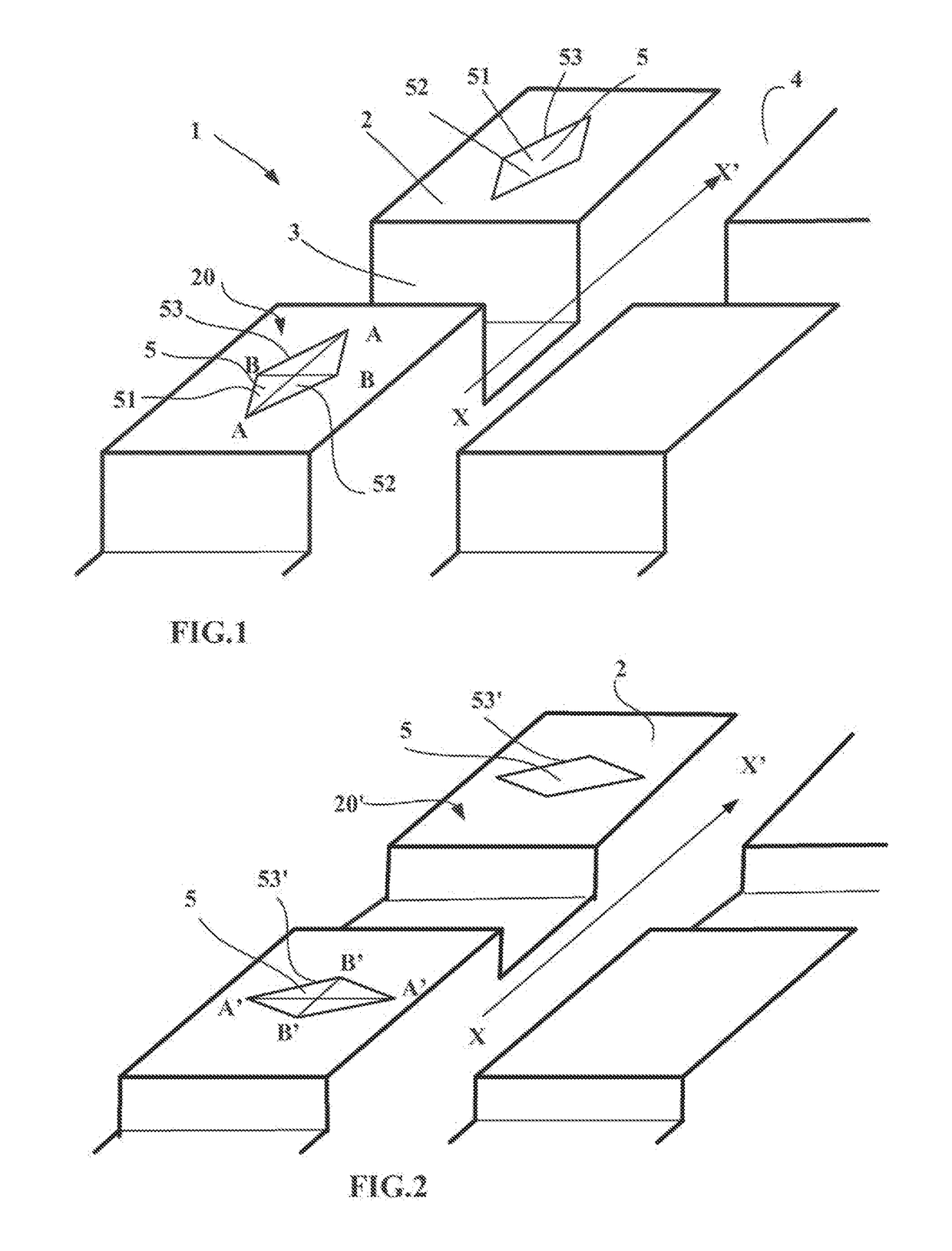Tread comprising voids for civil engineering vehicle tire
- Summary
- Abstract
- Description
- Claims
- Application Information
AI Technical Summary
Benefits of technology
Problems solved by technology
Method used
Image
Examples
Embodiment Construction
[0039]FIG. 1 depicts a partial view of an alternative form of tread pattern for a tread 1 according to the disclosure, this tread 1 being depicted as new, namely prior to any running.
[0040]In this FIG. 1 it is possible to distinguish a part forming a shoulder of the tread, this part being made up of a plurality of blocks 2 delimited by transverse grooves 3 intersecting a groove 4 that runs circumferentially. These transverse and circumferential grooves have the same depth corresponding substantially to the thickness EMU of material to be worn away during running. In this particular instance, the depth of the grooves is equal to 100 mm.
[0041]In this figure, the circumferential direction is embodied by an arrow XX′ extending along the circumferential groove.
[0042]Each block 2 of the shoulder part comprises lateral faces and a contact face 20 intended to come into contact with the ground during running. The intersections between the contact face 20 and the lateral faces in this instanc...
PUM
 Login to View More
Login to View More Abstract
Description
Claims
Application Information
 Login to View More
Login to View More - R&D
- Intellectual Property
- Life Sciences
- Materials
- Tech Scout
- Unparalleled Data Quality
- Higher Quality Content
- 60% Fewer Hallucinations
Browse by: Latest US Patents, China's latest patents, Technical Efficacy Thesaurus, Application Domain, Technology Topic, Popular Technical Reports.
© 2025 PatSnap. All rights reserved.Legal|Privacy policy|Modern Slavery Act Transparency Statement|Sitemap|About US| Contact US: help@patsnap.com


